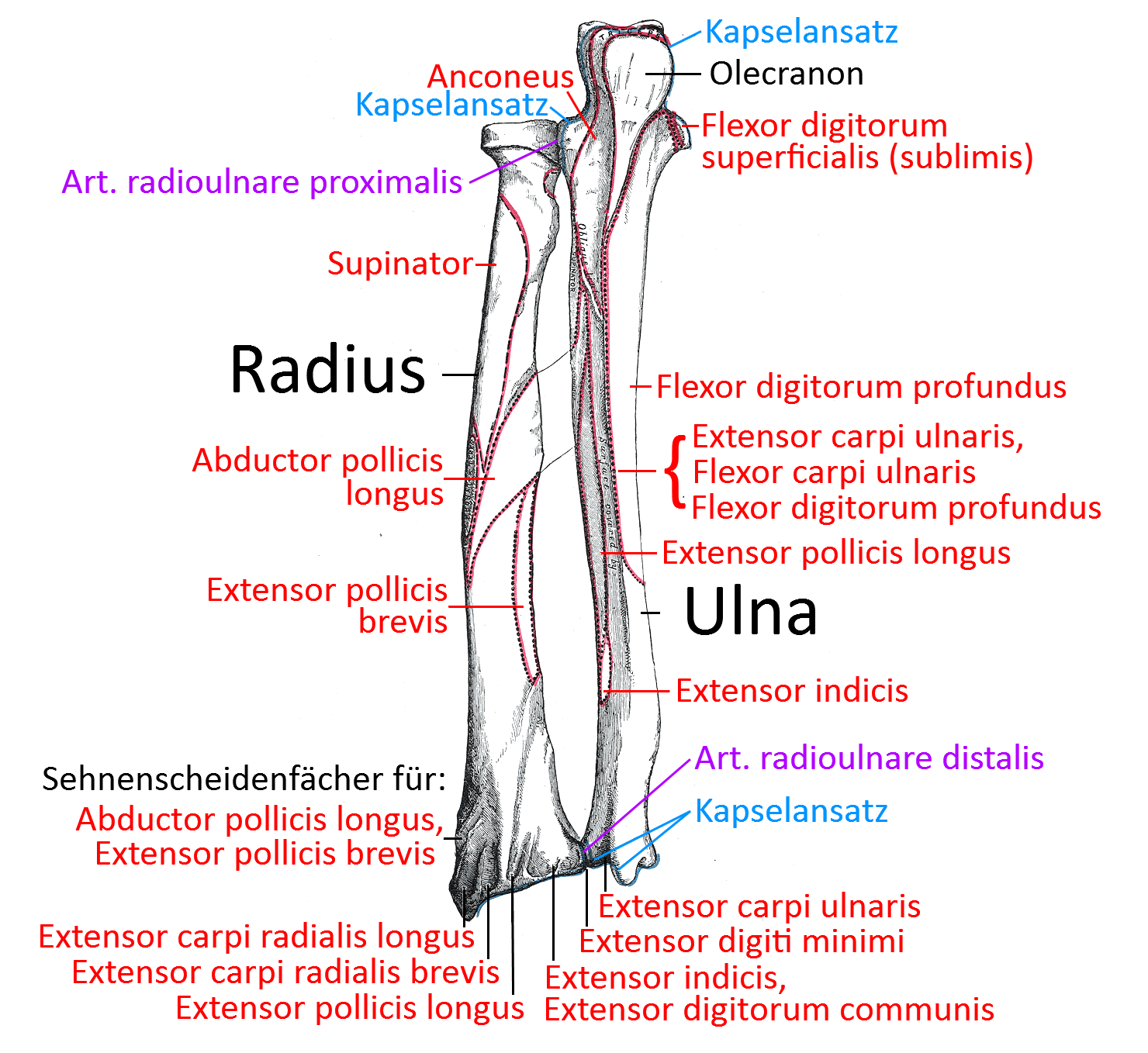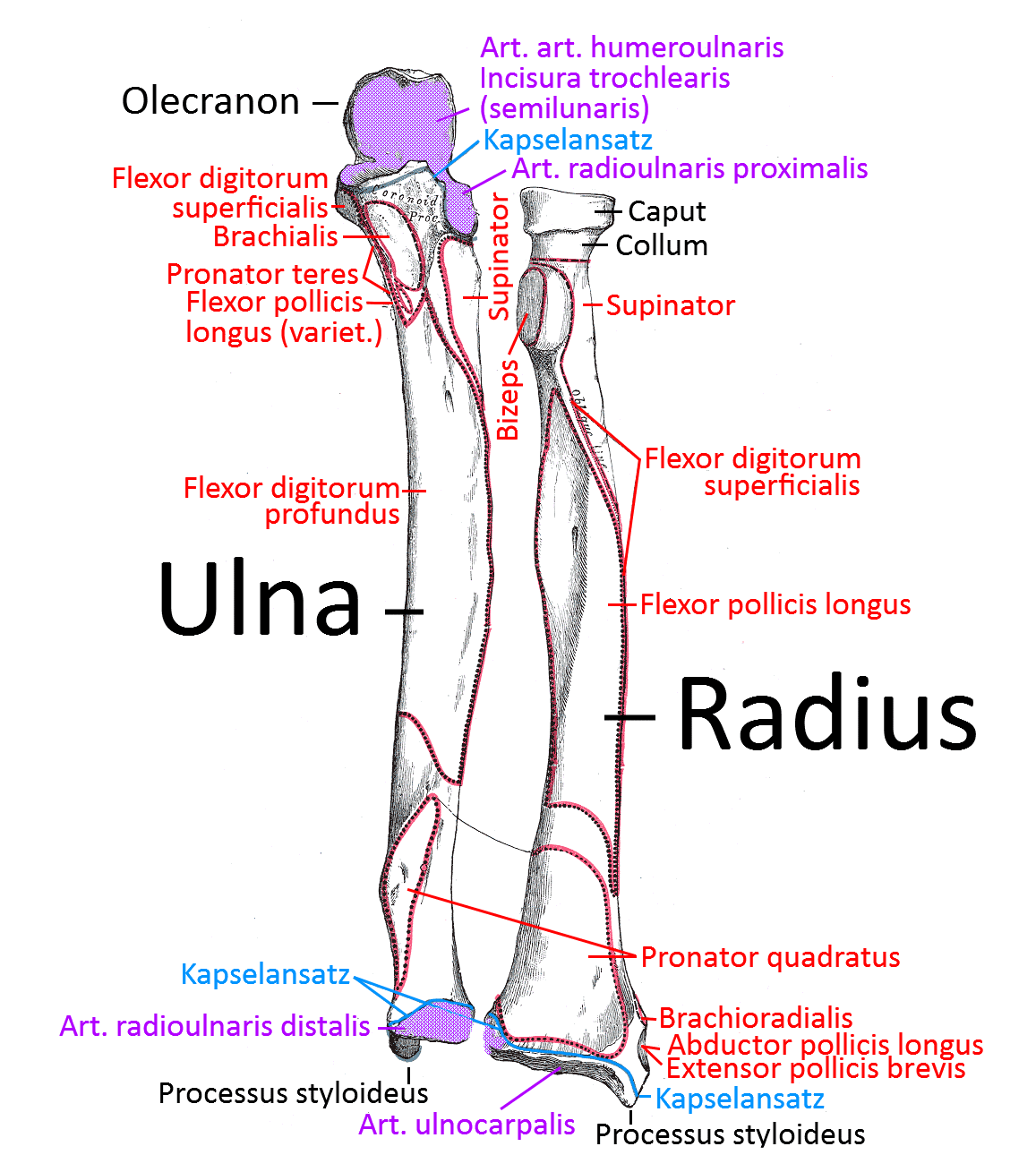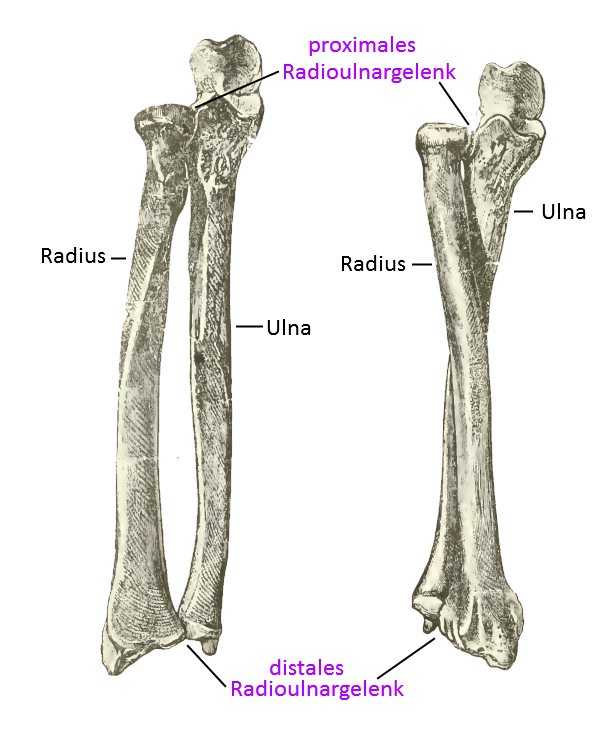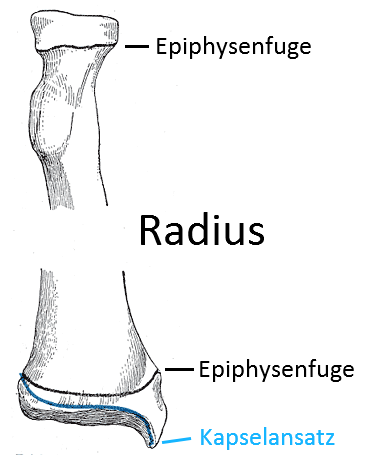Image: Radius

Radius
Radius, the forearm bone that forms the wrist (radiocarpal joint) distally with three carpal bones and is part of the elbow joint proximally. During pronation, the radius performs a turning movement over the ulna, whereby it moves proximally past the ulna in the elbow joint and rotates on the humerus. The radius forms two joints with the ulna: the proximal and the distal radioulnar joint. In traumatology, the radius is conspicuous with the distal radius fracture, which easily occurs in falls when trying to support the body with the hands.
Surfaces
- Facies anterior: surface located between margo anterior and margo interosseus, origin of middle and deep flexors
- Posterior facies: area located between the posterior margo and the interosseous margo, which primarily serves as the origin for extensors of the forearm
- Facies lateralis: surface located between the anterior and posterior margo, also the origin of some forearm muscles
Caput radii
Head of the radius that articulates with the humeral capitulum of the humerus in the humeroradial articulation.
Radial tuberosity
Strong roughening below the neck for insertion of the biceps. In pronation, its tendon wraps around the radius.
Processus styloideus radii
Distal stylar process on which the brachioradialis attaches.
Ulnar incisura
Notch for articulation (Art. radioulnaris) with the head of the ulna at the distal end on the medial side.
Joints
Radioulnar joints (proximal radioulnar joint and distal radioulnar joint)
The ulna articulates both proximally and distally with the radius, i.e. in the proximal proximal radioulnar joint (PRUG), a swivel joint, and in the distal distal radioulnar joint, also a swivel joint. This allows the radius to rotate around the fixed ulna and enables supination and pronation of the forearm. This is one of the ways in which the structure of the forearm differs from that of the lower leg, even though both have two bones each.
Radiocarpal joint
The radiocarpal joint is the wrist joint in which the hand is flexibly suspended from the radius. Here the distal radius articulates with the three carpal bones, the scaphoid bone, the lunate bone and the triquetrum bone.
Humeroradial joint
The humeroradial joint is the partial joint of the elbow joint in which the radius can rotate against the humerus, see the page on the
The humeroradial joint is the partial joint of the elbow joint in which the radius can rotate against the humerus, see the page on the elbow joint.
Pictures
Radius and ulna: anterior view (image links to linkmap)

Overturning movement of the radius around the ulna

Epiphyseal plates

